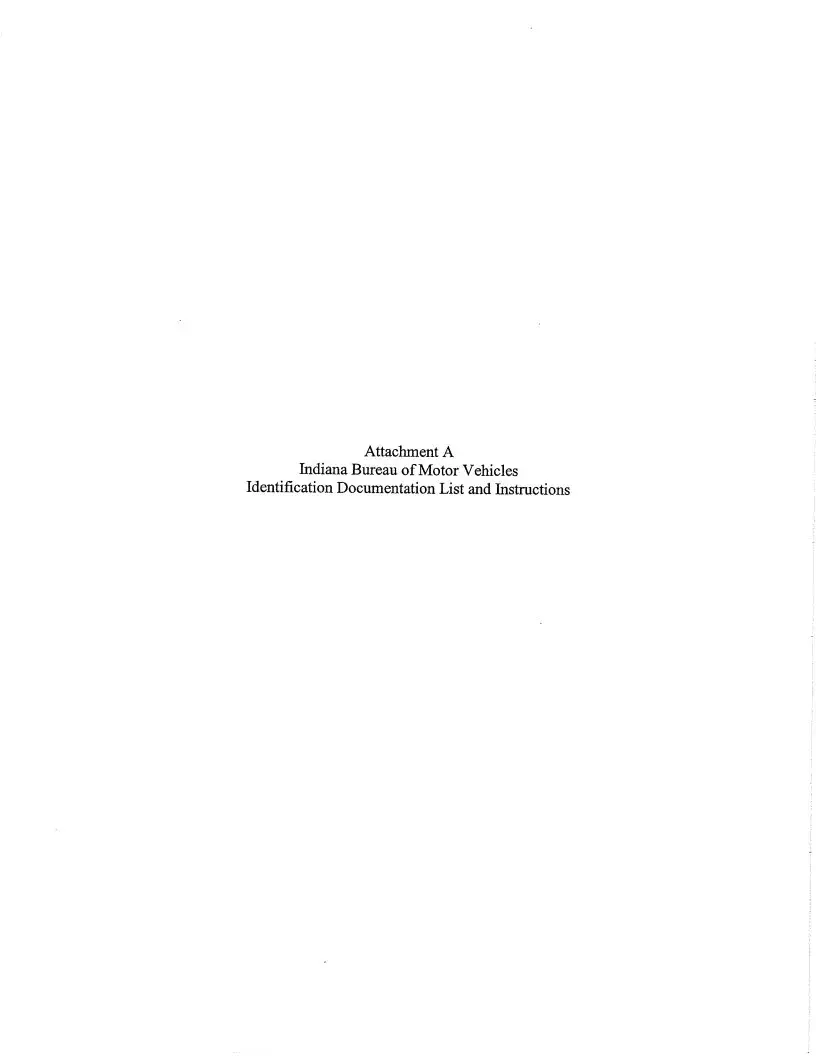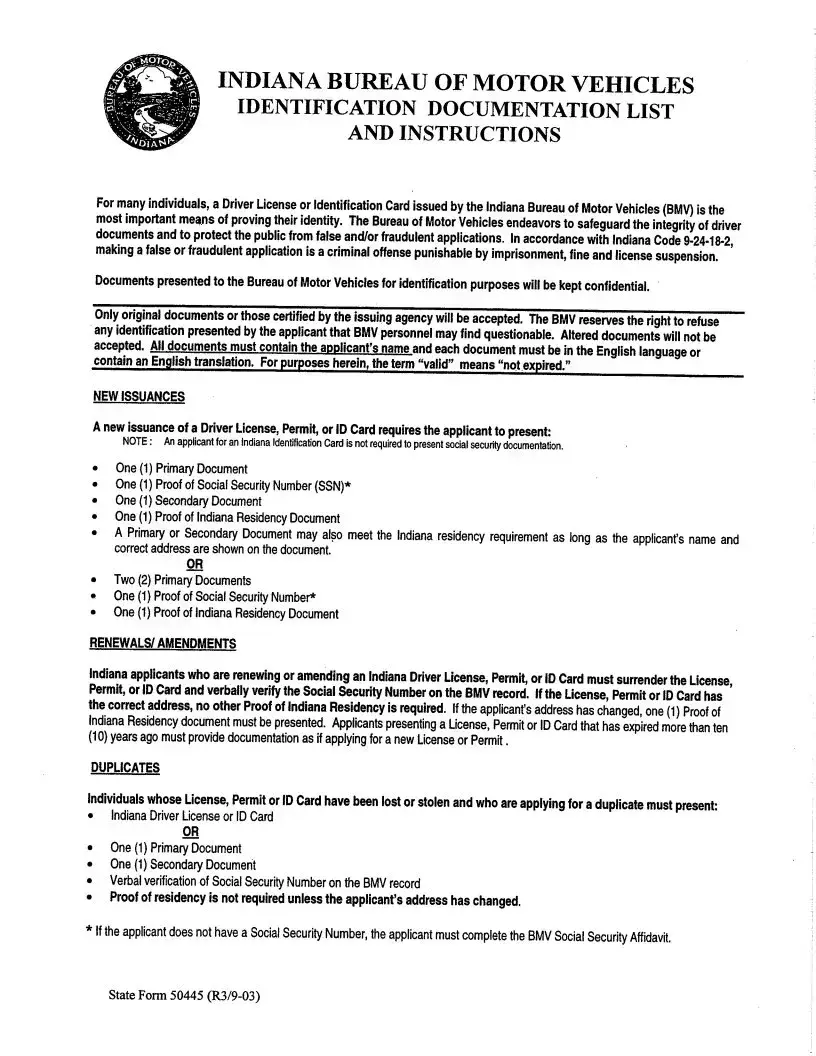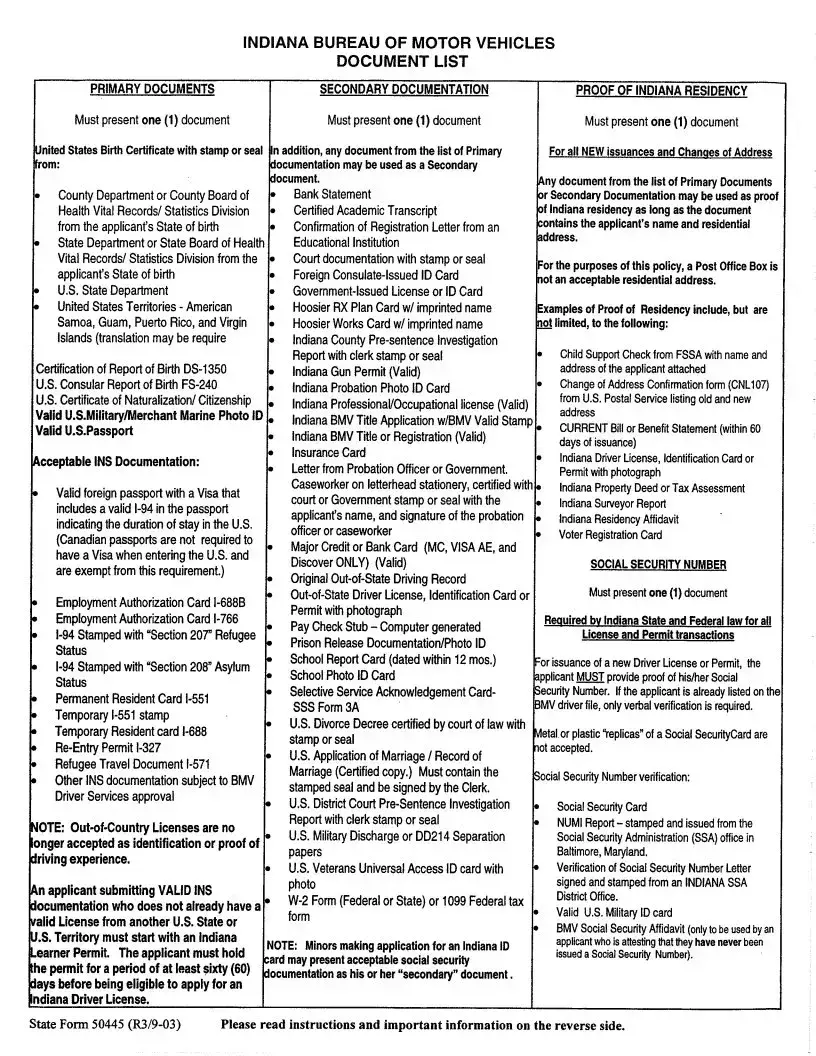Misconception 1: You don’t need any documents to apply for a driver’s license or ID card.
Many people believe that applying for a driver’s license or ID card with the Indiana Bureau of Motor Vehicles (BMV) is a simple process that doesn’t require documentation. However, the BMV requires several specific documents, including proof of identity, social security number, and residency. Failing to present the necessary documents can lead to delays or the rejection of your application.
Misconception 2: Any document, even if it’s expired, can be used to verify identity or residency.
This is not true. The BMV clearly states that all documents must be valid, meaning they cannot be expired. Submitting expired documents can result in an automatic refusal of your application, so it’s essential to check the expiration dates before presenting any documentation.
Misconception 3: A social security number is not needed for an Indiana Identification Card application.
While it’s true that applicants for an Indiana Identification Card do not need to provide social security documentation, they must still present valid identification details. So, it’s crucial to know the specific requirements based on the type of application you’re submitting.
Misconception 4: Proof of residency can be established with a Post Office Box address.
A Post Office Box is not acceptable for verifying residency. The BMV explicitly states that proof of residency must include your name and an actual residential address. Therefore, you need to provide acceptable documentation showing where you live to avoid complications.
Misconception 5: You can use any foreign document as proof of identity.
This is misleading. Only specific foreign documents, such as a valid foreign passport with a Visa, are acceptable. Additionally, the documentation must meet certain criteria outlined by the BMV. Always check these requirements to ensure your foreign ID will be accepted.
Misconception 6: Once you’ve submitted the CNL 107 form, the address change is automatic and doesn’t require further documentation.
Submitting the CNL 107 form to the U.S. Postal Service does not automatically update your residency information with the BMV. You must provide additional documentation to verify your new address when applying for a new license or ID card. This is an important step that many overlook.



